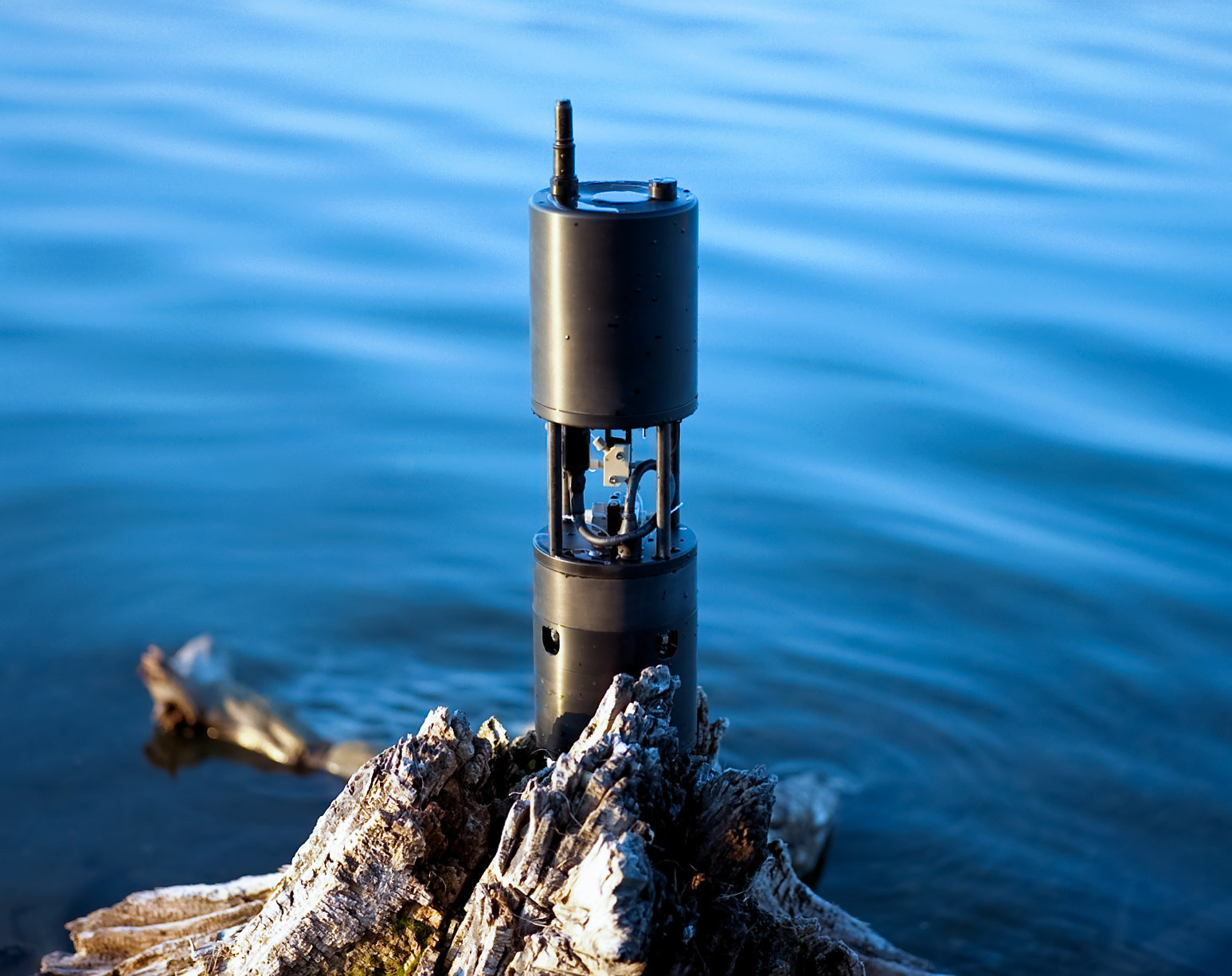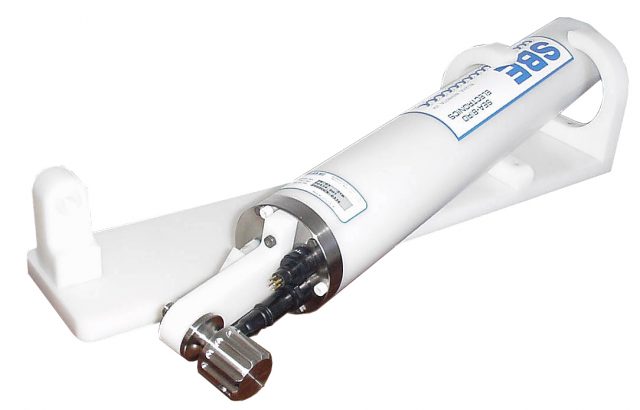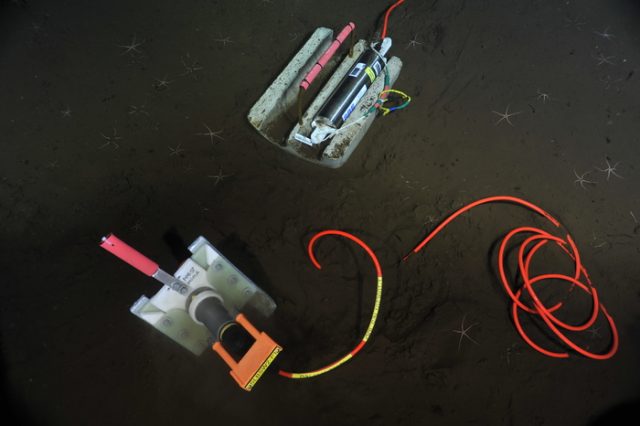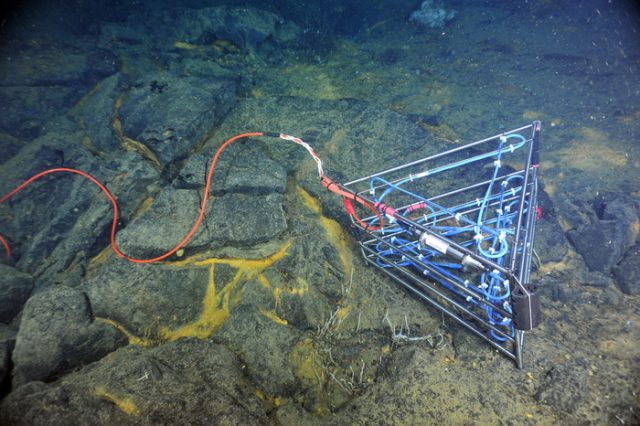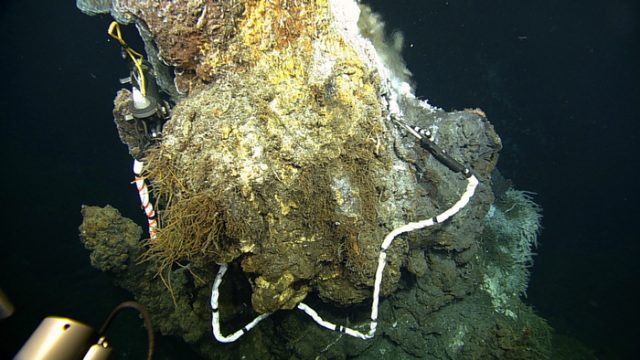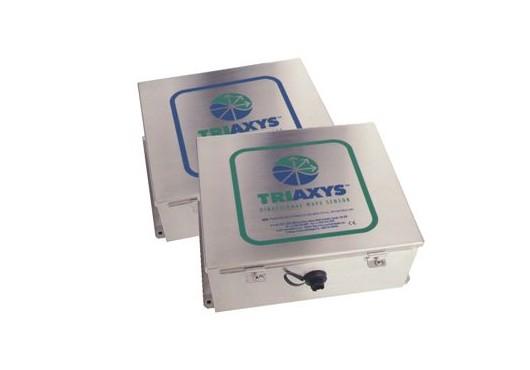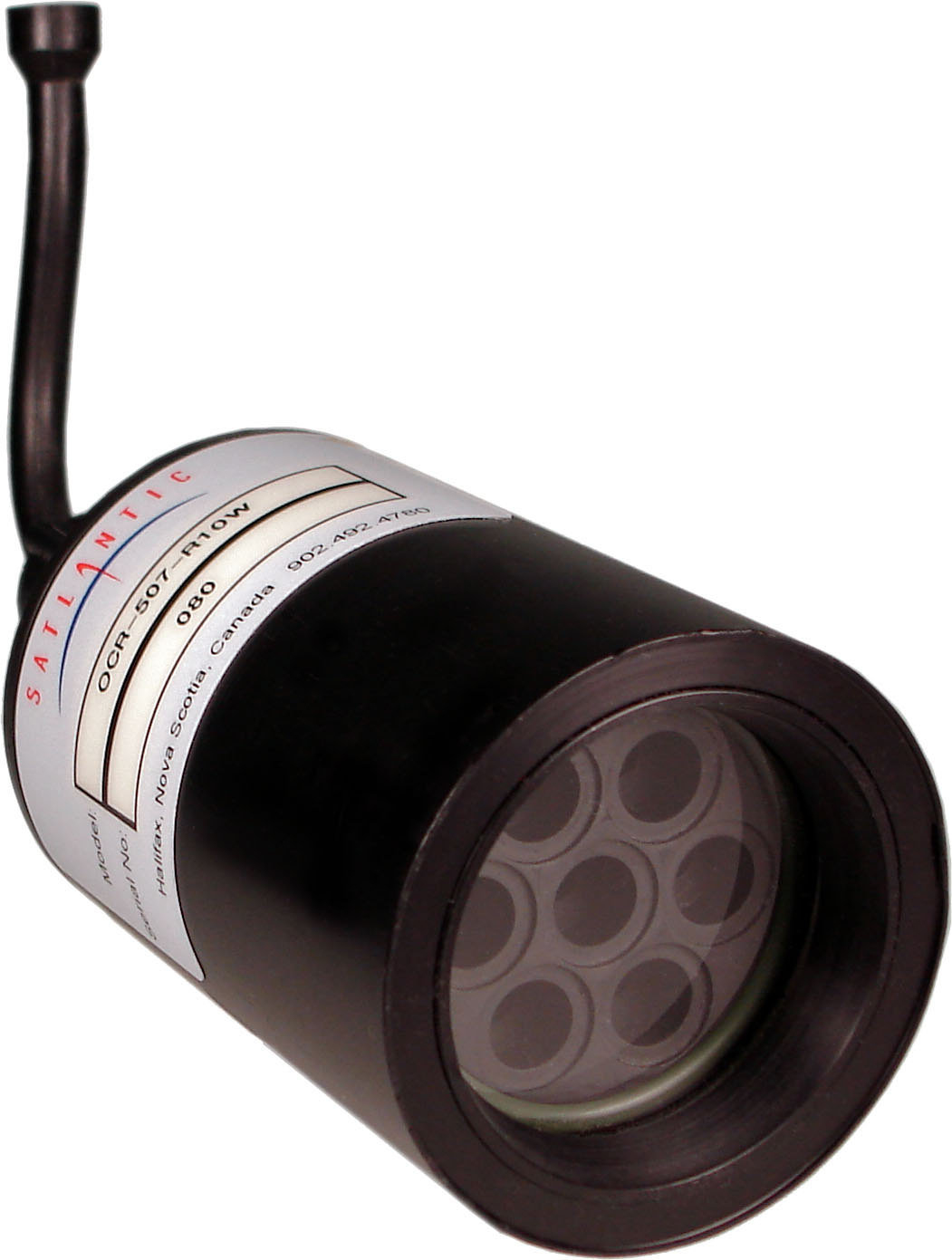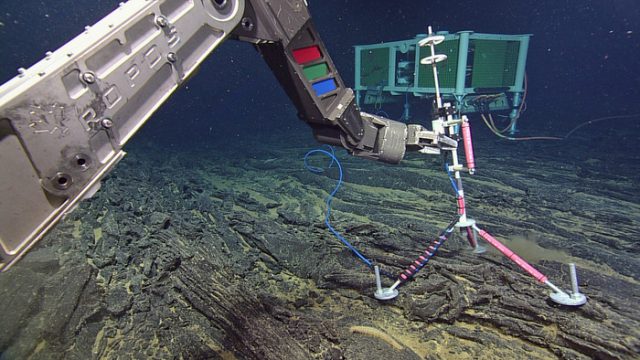PHSEN
Seawater pH sensors measure the total concentration of hydrogen ions in a solution. The OOI pH sensor (Sunburst SAMI-pH) measures pH (total hydrogen scale) in the marine pH range of 7-9. For tens of millions of years, Earth’s oceans have maintained a relatively stable pH level. However, since the beginning of the industrial revolution in the 1800s, the surface ocean pH is estimated to have decreased from approximately 8.25 to 8.14. While this may seem to be a very small change in pH, it represents about a 30% increase in H+ ion concentration, and is already impacting marine organisms and the shellfish industry.
(text courtesy of Interactive Oceans)
Read MorePRESF
Seafloor Pressure sensors measure the force on the seafloor exerted by the weight of the overlying water and atmosphere. Real-time pressure measurements are of great importance because lunar tides, storms, and tsunamis strongly impact pressures at the seafloor and the flow of fluids into and out of the oceanic crust. The Sea-Bird SBE 26plus uses an internal quartz transducer (a quartz crystal resonator whose frequency of oscillation varies with pressure induced stress) to measure absolute pressure: the pressure of the water column (hydrostatic pressure) plus the current atmospheric pressure at the sea surface (SBE 26plus manual & Paroscientific Digiquartz website). Seafloor pressure is directly measured by the SBE 26plus and is either output as ASCII (in real-time mode), or calculated from the raw hexadecimal data downloaded from the instrument after it is recovered.
The RBR quartz³ QPlus and quartz³ BPR were selected to replace the obsolete Sea-Bird instrument. The RBR instruments also uses the Digiquartz sensor.
(some text courtesy of Interactive Oceans)
Read MorePREST
Tidal Seafloor Pressure sensors measure the force of the seafloor exerted by the weight of the overlying water and atmosphere with a focus on tidal pressure changes by measuring pressure shifts down to the millimeter. Real-time measurements provided by seafloor pressure sensors are of great importance because lunar tides, storms, and tsunamis strongly impact pressures at the seafloor and the flow of fluids into and out of the oceanic crust.
The seafloor pressure sensors are installed and connected to the Cabled Array infrastructure at the Oregon Slope Base Site, at the Axial Base Site, and at the Southern Hydrate Summit site.
(text and images courtesy of Interactive Oceans)
Read MoreTMPSF
The Diffuse Vent Fluid 3-D Temperature Array measures temperatures of diffuse flow across the seafloor. The thermistor array is designed as 4 stacked triangular arrays with 24 independent temperature measurement points, providing a three-dimensional distribution of temperature. Moderate- to low-temperature hydrothermal fluids exiting diffuse flow sites on Axial Volcano support communities of animals that include limpets, tubeworms, scale worms, clams, and Pycnogonida, an arthropod that resembles a spider. Critical to understanding how these communities thrive, evolve, and expire are long-term measurements of fluid temperature and chemistry, coupled with direct imagery.
A custom thermistor array, developed by UW Project Scientist, Giora Proskurowski, is designed to measure the 3-dimensional distribution of temperatures within a diffuse flow site. Within the four layers of blue cable, there are 24 places where temperatures will be continuously measured. When installed at the base of a hydrothermal chimney within the ASHES hydrothermal field at the summit of Axial Volcano, the cabled thermistor array will provide a real-time 3-dimensional “view” of the temperature structure at this site. Such data will provide information about the environmental conditions within which the biological assemblages thrive and evolve. Other installations at this site include an osmotic sampler, to determine the temporal evolution of fluids, and a high-definition video camera, to study fluid velocities and the evolution of animal and microbial communities within the context of evolving environmental conditions (e.g. earthquakes, lunar tides, eruptions).
(text and images courtesy of Interactive Oceans)
Read MoreTRHPH
The Hydrothermal Vent Fluid Temperature and Resistivity sensor measures the temperature, resistivity, and Eh of the mineral-rich fluid plumes that emanate from cracks on the seafloor, providing insight into the sub-surface structure and dynamics of these unique habitats. Known as the “Res Probe,” this novel seafloor instrument is designed to go inside the “throats” of high temperature (up to 480°C) black smoker chimneys to measure the resistivity and temperature of the hydrothermal vent fluids. Resistivity is an analogue for chlorinity, measuring the “saltiness” of the vent fluids. Many of the structures at Axial Volcano emit boiling fluids, as reflected by their high temperature and low chlorinity. The white wrapping around the cable prevents overheating of the cable by surrounding hydrothermal fluids, should a change in venting sites occur during the duration of the installation.
(text and images courtesy of Interactive Oceans)
Read MoreVELPT
The Single Point Velocity Meters (Nortek Aquadopp® instruments) use acoustic Doppler technology to measure the mean velocity (speed and direction) of water in two-dimensions (U & V) as it moves past the sensor. VELPT instruments are mounted on stationary moorings, seafloor platforms, and wire-following profilers across multiple OOI arrays.
Read MoreWAVSS
A Surface Wave Spectra sensor measures the frequency, height, period, and direction of waves on the ocean surface. The WAVSS instruments (TRIAXYS Next Wave sensors) measure three-dimensional acceleration, rotation rate, and orientation in the magnetic field of the earth via a compass. From this, the motion of the sea surface in the wave field can be reconstructed.
The instrument configuration is an important part of the metadata to be preserved together with the output data product, including engineering drawings that can be found in the cruise metadata.
The instrument measures acceleration for a certain acquisition time interval (typically 20-30 minutes). Then, the wave properties are computed for this interval. There is one data value for each wave property representing the entire acquisition time interval. The actual time series resolving the instrument motion over the course of the acquisition interval can be computed as well.
Read MoreSPKIR
The Spectral Irradiance sensor (Sea Bird OCR-507 multispectral radiometer) measures the amount of downwelling radiation (light energy) per unit area that reaches a surface. Radiation is measured and reported separately for a series of seven wavelength bands (412, 443, 490, 510, 555, 620, and 683nm), each between 10-20 nm wide.
Read MoreVEL3D
The 3-D Single Point Velocity Meter (VEL3D) measures the fluctuating velocity (speed and direction) of water moving past the sensor and platform motion on moving profilers in three-dimensions (u,v,w). The VEL3D turbulent flow current meter measures how seawater mixes at the small scale, which is important in understanding how heat, mass, and momentum are transported throughout the ocean. When deployed in conjunction with nearby acoustic instruments, current meters can also provide important data for filtering of local current “noise” out of the acoustic signal.
Text and images courtesy of Interactive Oceans
Read More
